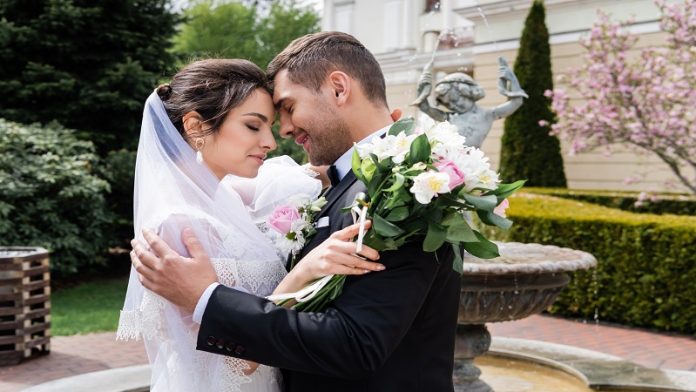
Navigating the process of obtaining a Marriage Green Card can seem overwhelming, but it’s an essential step for couples seeking to build a life together in the United States. A Marriage Green Card allows a spouse of a U.S. citizen or permanent resident to live and work in the country as a lawful permanent resident. This not only solidifies your legal status but also opens up a range of opportunities for employment and travel.
We understand the importance of ensuring a smooth transition for your loved one, and our goal is to provide clear and practical information. The process involves several key steps, including filing the necessary forms, attending interviews, and providing substantial proof of your marital relationship. Proper documentation and attention to detail can significantly enhance your chances of success.
Join us as we break down each phase of the Marriage Green Card application, from gathering initial documents to attending the final interview. Our comprehensive guide aims to demystify the process, offering you the confidence to move forward with your application, knowing what to expect at each stage. learn more about marriage-based green card
Table of Contents
Eligibility and Application Process
To obtain a marriage green card, we must determine eligibility, file the appropriate petitions, and provide necessary supporting evidence and documentation.
Determining Eligibility
Eligibility is based on the nature of the marriage and the applicant’s background. A valid marriage to a U.S. citizen or permanent resident is crucial. The U.S. government requires proof of marriage validity and that the marriage is genuine.
There may be inadmissibility issues, such as criminal history or prior immigration violations. In some cases, a waiver for inadmissibility might be necessary.
Key documents include the marriage certificate, birth certificate, and passport. For those previously married, a divorce decree is essential. Understanding these requirements ensures we can proceed with the application process without delays.
Filing the Petitions
We start by filing the Petition for Alien Relative (Form I-130). This establishes the relationship between the U.S. citizen or permanent resident and their spouse. An additional form, Form I-130A, must be completed by the foreign spouse.
For those already in the U.S., we may pursue Adjustment of Status by filing Form I-485. For applicants abroad, Consular Processing is required, and the petition will be processed through the National Visa Center and the U.S. Embassy.
The Immigrant Visa Application Processing Fee and Affidavit of Support Fee must be paid. Filing Form I-864, the Affidavit of Support, demonstrates that the U.S. citizen or resident can financially support their spouse.
Supporting Evidence and Documentation
Supporting evidence and documentation play a pivotal role. Essential documents include the birth certificate, passport, and marriage certificate. We may also need to submit a Certificate of Citizenship or naturalization certificate.
Types of supporting evidence include joint financial accounts, photographs, and correspondence that demonstrate the relationship. Form I-693, the Medical Examination form, is also required, as well as Form I-131 for travel permits.
When filing from abroad, we complete Form DS-260, the Immigrant Visa Application. An Interview at the U.S. Embassy will follow. The National Visa Center ensures all documents are in order before scheduling the interview.
By accurately gathering and submitting these documents, we ensure a smoother application process.
Living in the U.S. with a Green Card
Living in the U.S. with a green card involves a set of rights and responsibilities that must be understood for smooth and lawful residence and work. Maintaining permanent residency is crucial for ensuring ongoing legal status, and there is a defined path to U.S. citizenship for those who wish to naturalize.
Rights and Responsibilities
As green card holders, we have the right to live and work anywhere in the U.S. We can also travel abroad, but we must adhere to residency requirements to avoid abandonment of our status. We can sponsor relatives for green cards, and we may qualify for Social Security benefits and federal student aid.
Having a Permanent Resident Card comes with responsibilities. We must carry it with us at all times and renew it every ten years. We are required to pay taxes and follow all federal, state, and local laws. Understanding these duties helps us to maintain our lawful permanent resident status effectively.
Maintaining Permanent Residency
Being a lawful permanent resident requires us to take certain steps. Physically present in the U.S. for at least six months each year is necessary to avoid being considered as having abandoned residency. We should file taxes as residents and inform the USCIS of any address changes promptly using Form AR-11.
If we hold a Conditional Green Card, we must file Form I-751 to remove conditions based on a bona fide marriage. Joint ownership or property and financial co-mingling support the validity of our marriage, minimizing issues related to fraud. Failure to do this timely can result in the loss of our permanent resident status.
Path to U.S. Citizenship
We have to meet specific criteria to naturalize and become U.S. citizens. This process typically starts after five years of permanent residency, or three years if married to a U.S. citizen. Petitioners must show good moral character and pass a citizenship test on U.S. history and government.
Filing Form N-400 (Application for Naturalization) initiates the process. We must provide documentation such as our Permanent Resident Card, proof of continuous residency, and evidence of physical presence in the U.S. Completing the process grants us a Naturalization Certificate, allowing us to apply for a U.S. passport and enjoy all the rights of citizenship.
Adhering to these guidelines ensures a successful path from permanent residency to full-fledged U.S. citizenship.







